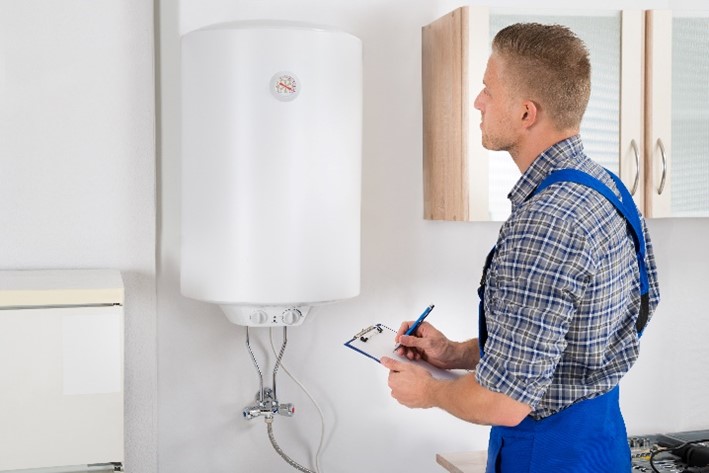Almost everyone seems to have their own unique views when it comes to Water Heater Maintenance Tips You Can't Afford to Forget.

Warm water is vital for daily convenience, whether it's for a refreshing shower or washing meals. To guarantee your hot water system runs successfully and lasts longer, normal maintenance is crucial. This post provides functional tips and insights on just how to maintain your home's hot water system to stay clear of disruptions and pricey fixings.
Introduction
Keeping your home's hot water system might appear challenging, yet with a few simple steps, you can guarantee it runs smoothly for many years to come. This guide covers every little thing from understanding your hot water system to do it yourself upkeep tips and understanding when to call in expert aid.
Importance of Preserving Your Warm Water System
Regular upkeep not just extends the life expectancy of your warm water system yet additionally ensures it operates successfully. Neglecting maintenance can cause lowered efficiency, higher energy expenses, and also early failure of the system.
Signs Your Hot Water System Needs Maintenance
Understanding when your warm water system requires focus can prevent major problems. Watch out for indicators such as irregular water temperature level, strange noises from the heater, or rustic water.
Comprehending Your Hot Water System
Before diving into maintenance tasks, it's valuable to comprehend the standard components of your hot water system. Generally, this includes the water heater itself, pipelines, anode poles, and temperature level controls.
Month-to-month Maintenance Tasks
Regular month-to-month checks can aid capture small problems before they escalate.
Purging the Water Heater
Flushing your water heater removes sediment build-up, improving performance and extending its life.
Monitoring and Replacing Anode Rods
Anode rods protect against corrosion inside the container. Checking and replacing them when broken is vital.
Evaluating and Adjusting Temperature Settings
Adjusting the temperature setups makes sure optimum efficiency and safety and security.
DIY Tips for Maintenance
You can carry out numerous maintenance jobs on your own to keep your hot water system in leading condition.
Looking for Leakages
Frequently examine pipelines and connections for leakages, as these can lead to water damage and greater costs.
Examining Pressure Alleviation Valves
Evaluating the pressure safety valve ensures it functions correctly and avoids extreme pressure buildup.
Protecting Pipes
Shielding warm water pipes lowers heat loss and can conserve power.
When to Call an Expert
While DIY maintenance is valuable, some problems require specialist experience.
Facility Concerns Needing Professional Aid
Instances include significant leaks, electric issues, or if your hot water heater is constantly underperforming.
Regular Expert Maintenance Advantages
Professional maintenance can consist of complete examinations, tune-ups, and making sure compliance with safety criteria.
Final thought
Routine maintenance of your home's warm water system is vital for efficiency, long life, and cost financial savings. By following these tips and understanding when to seek specialist assistance, you can ensure a reliable supply of warm water without unexpected disturbances.
How to Maintain an Instant Hot Water Heater
- Before tinkering with your hot water heater, make sure that it’s not powered on. You also have to turn off the main circuit breaker and shut off the main gas line to prevent accidents. Also turn off the water valves connected to your unit to prevent water from flowing into and out of the appliance.
- 2. When you’re done, you have to detach the purge valves’ caps. These look like the letter “T” and are situated on either side of the water valves. Doing so will release any pressure that has accumulated inside the valves while at the same time avoid hot water from shooting out and burning your skin.
- 3. When the purge valves’ caps are removed, you have to connect your hosing lines to the valves. Your unit should have come with three hoses but if it didn’t, you can purchase these things from any hardware or home repair shops. You can also get them from retail stores that sell water heating systems. Read the user’s manual and follow it to complete this task properly. When the hosing lines are connected, open the purge port’s valves.
- 4. You should never use harsh chemical cleaners or solutions when cleaning your unit. Make use of white vinegar instead. It should be undiluted and you’ll probably use about 2 gallons.
- 5. Now flush your water heater. This task should probably take about 40 minutes. We can’t give you specific directions for this because the procedure is carried out depending on the type, model and brand of your heater. With that being said, refer to the user’s manual.
- 6. When you’re done draining the unit, you have to turn off the purge port valves again. Remove the hosing lines that you earlier installed on each of the water valves. Put the valve caps (purge port) back in their respective places and be very careful so as not to damage the rubber discs that are found inside these caps.
- 7. Now that everything’s back in place, check your user’s manual again to find out how to reactivate your water heating system.
- 8. Once it is working, turn one of your hot water faucets on just to let air pass through the heater’s water supply pipes. Leave the tap on until water flows smoothly out of it.
https://www.orrplumbing.com/blog/2014/september/how-to-maintain-an-instant-hot-water-heater/

As an avid person who reads about Tips on Maintaining a Water Heater, I assumed sharing that topic was important. Enjoyed reading our blog posting? Please share it. Help somebody else locate it. Thanks a bunch for your time. Please check our site back soon.
Click Here
Comments on “Tips on How to Keep Your Home's Hot Water System Functioning WellStraightforward Ways to Care for Your Home's Hot Water System ProperlyHow to Extend the Life of Your Home's Hot Water System By Maintenance”